|
Princeton! They had nine job ads: eight postdocs and one assistant prof. Since the postdocs have names and institutes attached to them, I'm assuming the department doesn't do the selecting? How the heck does that work? (Clearly I wasn't fancy enough to win a named postdoc anywhere.) Who picks the Louis Skolnick Postdoctoral Research Associate? Surely it can't be the department doing the selecting. How the hell could any department do nine searches, even if eight are postdocs?
Runners-up include: 1. University of Chicago (three postdocs, two junior, one senior) 2. University of Pittsburgh (four open rank, one visiting fellowship, one junior) 3. Rice University (three open rank, two postdocs) 4. Stanford University (one open, one postdoc, one junior, one senior, one fixed-term junior) I'm at home moving my classes online and doing my best with my wife to (a) stave off illness and (b) home-school our kids. So I says to myself I says, "let's make Friday night crazy by doing some analysis of the 2018-2019 job cycle!" Strap in, nerds. It's gonna get nutty up in here. First, let's take a look at job postings for the last 5 years. Notice the obvious cycle: You can see each year's peak, which quickly tapers off. Now this is for posting dates. Let's check out for when apps are due. You'd expect the same kind of cycle aaaaaaand....... That's exactly what you get. Cool cool cool cool cool. Let's zoom in on posting dates for 2018-2019. FYI: 14 posts didn't fill in the "deadline" field. I guess is was in the body of the post? Annoying... That peak you see is 9 job-postings in one day on September 11. But we can also see that the peak job posting period is August 28 - November 1. Those are the first and last days where there at least four job postings in a day. This period accounts for nearly half of all jobs posted during this cycle (153/322). Keep in mind we're filtering for junior, postdoc, and open rank positions. We can also see two longish stretches of days without posting jobs: from December 22 to January 1 and May 31 to June 15 (roughly -- there's a day with two posts in that stretch). Now let's take a look at when job apps are due. Holy guacamole! That peak you see is November 1. Here are the top 5 due dates with the number of deadlines on each day (well, top 6, since there's a tie for 5th place). November 1..... 31 November 15... 22 December 1...... 12 March 1............. 10 October 15........ 9 January 15........ 9 You get some downtime in the summer: mid-June to early July tends to be pretty chill. Are there differences by job type? Open rank and junior faculty have their intense period in November. Postdoc apps don't have the same peak. The takeaway? If it's the fall and you absolutely have to choose between prepping junior apps and postdoc apps, focus on the junior apps. You'll miss some postdoc deadlines, but you'd do better to focus your energy on the junior apps. But wait, we can do even better. Let's look specifically at TT jobs and postdocs. So it looks like the lesson holds even filtering out junior, fixed-term jobs. One more question: how much time to applicants get between the day the job is posted and the deadline? Your eyes do not deceive you. There's one junior job for which applicants had 0 days. Two plausible hypotheses: a typo or the posting the job was just a formality. Junior faculty openings have a median of 41 days and most apps are due between 30 and 60 days of posting.
For postdoc positions, the shortest time between the posting and the deadline is 3 days, but most are between 34 and 65, with a median of 48. But postdoc postings have more dispersed outliers. So there you have it. Some interesting findings about last year's job market. As always, feedback is welcome, especially if there's other analyses you'd like done. I recently downloaded some data from PhilJobs on job openings in the past few years. I wanted to share some findings from that dataset: some where's and when's. The data has a number of variables of interest: hiring school, kind of job (academic or not), date the ad was posted, date apps are due, level of job (postdoc, junior, etc) and contract type (TT, fixed-term, etc), among others. With these data, we can ask some interesting questions. Here's what we're looking at today. 1. how many jobs were there? 2. where were the jobs? like literally, where in the world were the jobs? I filtered the data for three kinds of job: junior faculty, postdoc and open rank hires. (FWIW filtering for "junior" doesn't discriminate between TT and fixed-term. We'll have a chance to separate out TT and fixed-term later.) We might look at admin jobs or senior hires, but I'm not terribly concerned about those groups, tbh. When reflecting on how terrible the job market is for philosophers, the usual victim is a newly-minted (or newishly-minted) PhD looking for steady employment. And as far as the boundaries of the hiring cycle, I used August 1 to July 31 to define 'hiring cycle'. As we'll see, jobs are posted year-round, but these bounds feel natural for identifying the beginning and the end of a cycle. But before we completely leave the non-junior jobs behind, let's look quickly at the number of jobs posted last year in each category. So during the 2018-2019 hiring cycle, there were roughly 180 junior jobs, 70-ish postdocs, and 60-ish open-rank. Let's zoom in on the junior faculty So 110 or so jobs are TT and 65 or so are fixed-term. 10-ish are junior but "tenured, continuing, or permanent." I imagine this is a catch-all category for "junior faculty, long-term" Now, let's look at where the jobs are. I used the ggmap package. Word to the wise: this package is awesome, but make sure you (i) get your google apps key and (ii) enable the static maps API. (Details are in the documentation for ggmap.) It took me forever to figure out that I didn't tell Google that I wanted to use the static maps. Anywho, we'll start with postdocs, junior faculty, and open rank and then focus on junior positions. So here's something interesting: most jobs are on the east coast -- particularly the northeast corridor -- or California. No jobs in the Dakotas, Utah, Wyoming, or New Mexico. Now let's look at junior faculty jobs, and we'll color the dots by contract type. There's no clear pattern to TT vs fixed-term jobs in terms of location. CA had a bunch of TT jobs. So did the northeast. What's the takeaway? There's a big divide in the density of job openings east and west of the Mississippi River. Once you move west of those states whose eastern borders are the Mississippi, jobs are a lot scarcer. Beyond that, there are higher concentrations of jobs in (1) California and (2) the northeast (NJ, NY, CT, MA...and also some bordering states like PA, VA, and MD). If you get your PhD on the east coast or CA, you have a decent chance of staying there. So I says to myself I says, "I wonder how this compares with median household income per county..." Here's the map: Hmmm.... nothing obvious. The northeast and Midatlantic regions have a higher median income per family than lots of other places in the country. (Holy shit -- Northern Virginia has a median income of $125k! That's higher than the Bay Area! And I'm astonished because I grew up the son of a handyman in NoVa.) More detailed investigations might yield something, but now it doesn't look like much.
|
About me
I do mind and epistemology and have an irrational interest in data analysis and agent-based modeling. Old
|


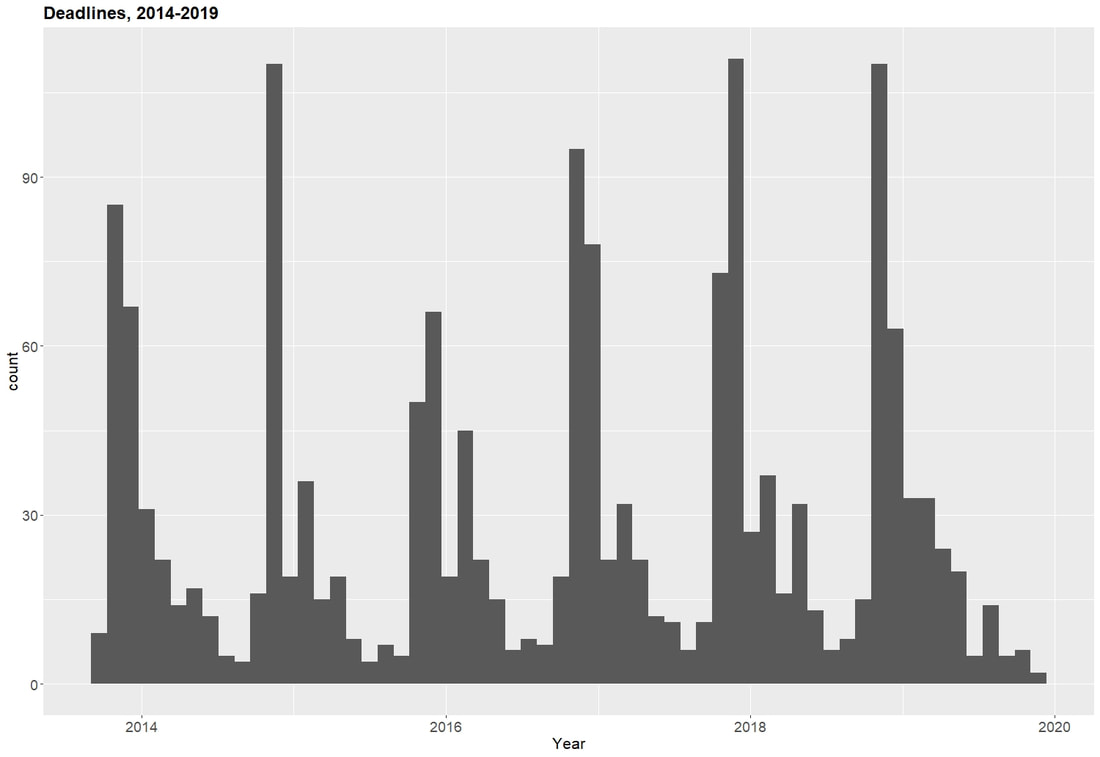

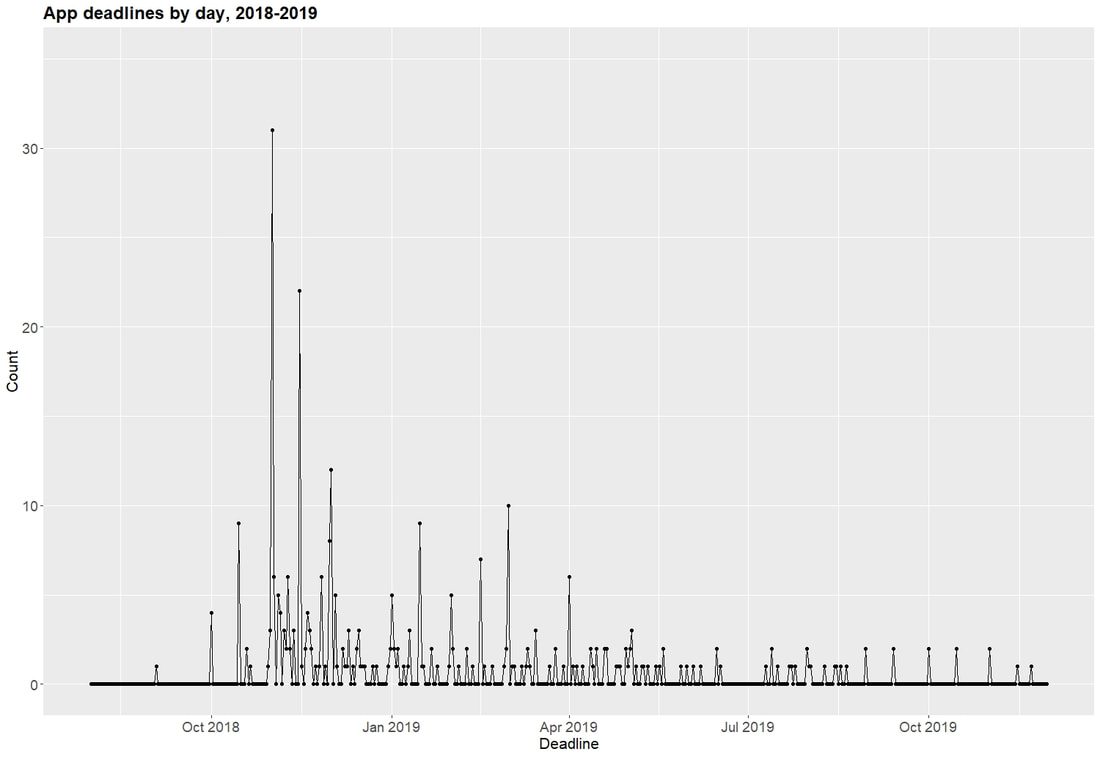

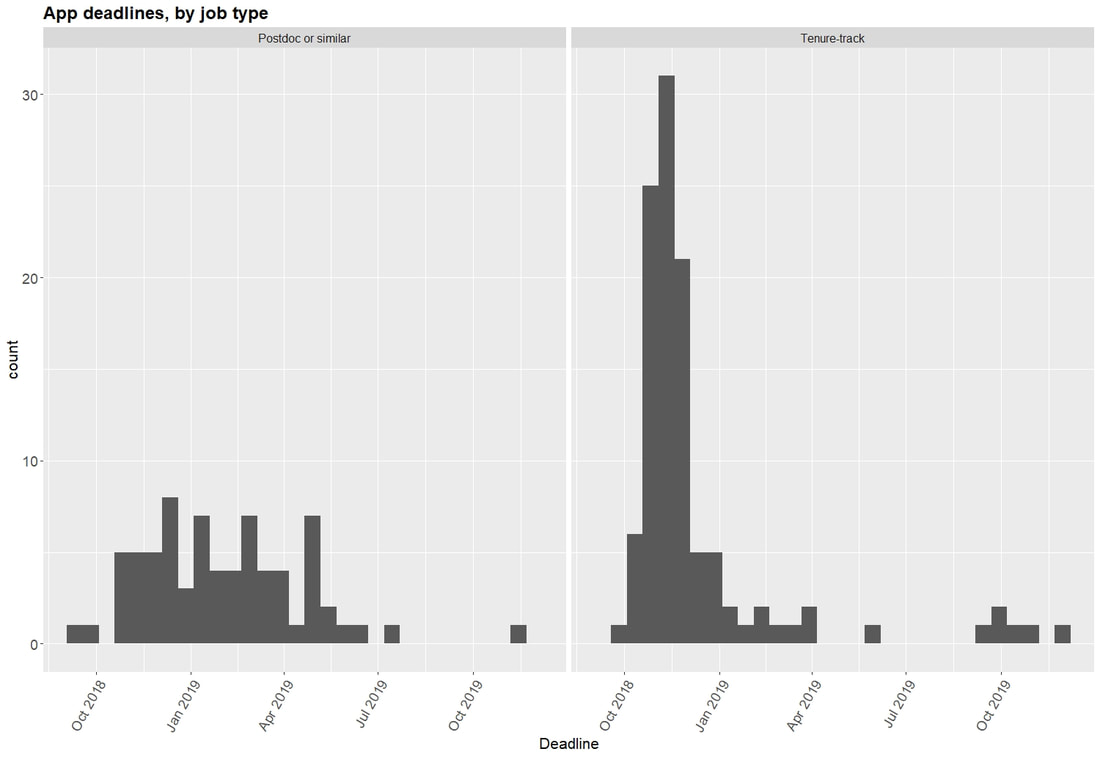



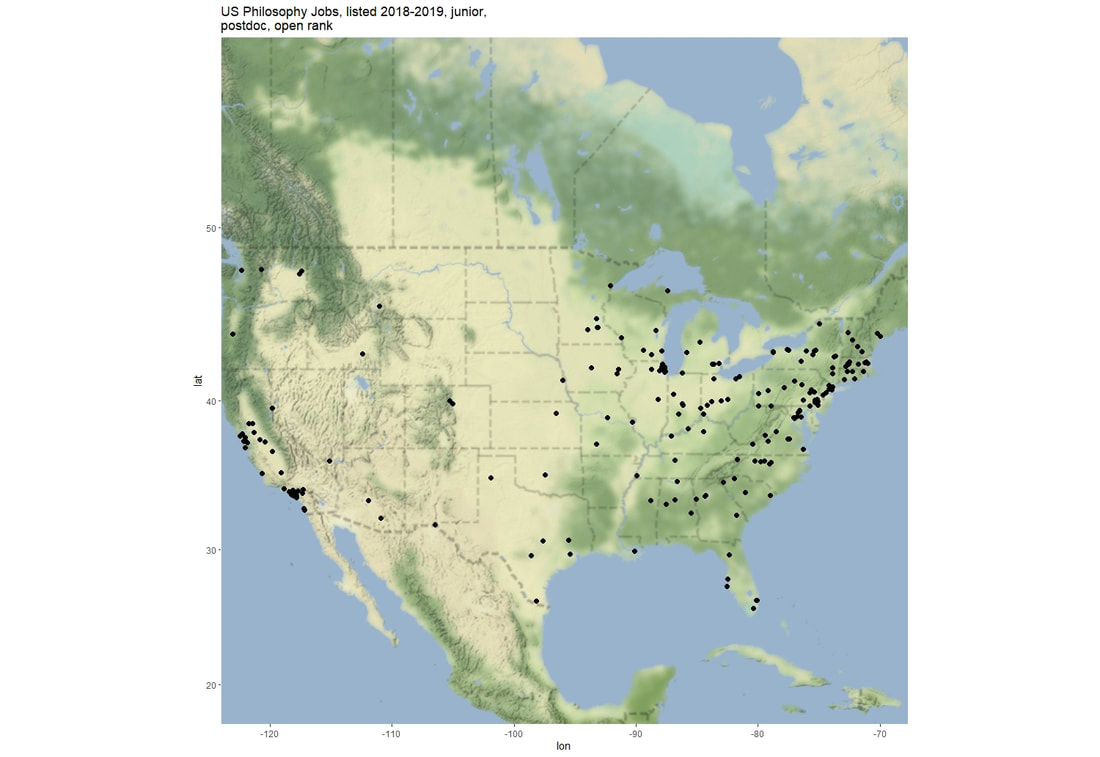

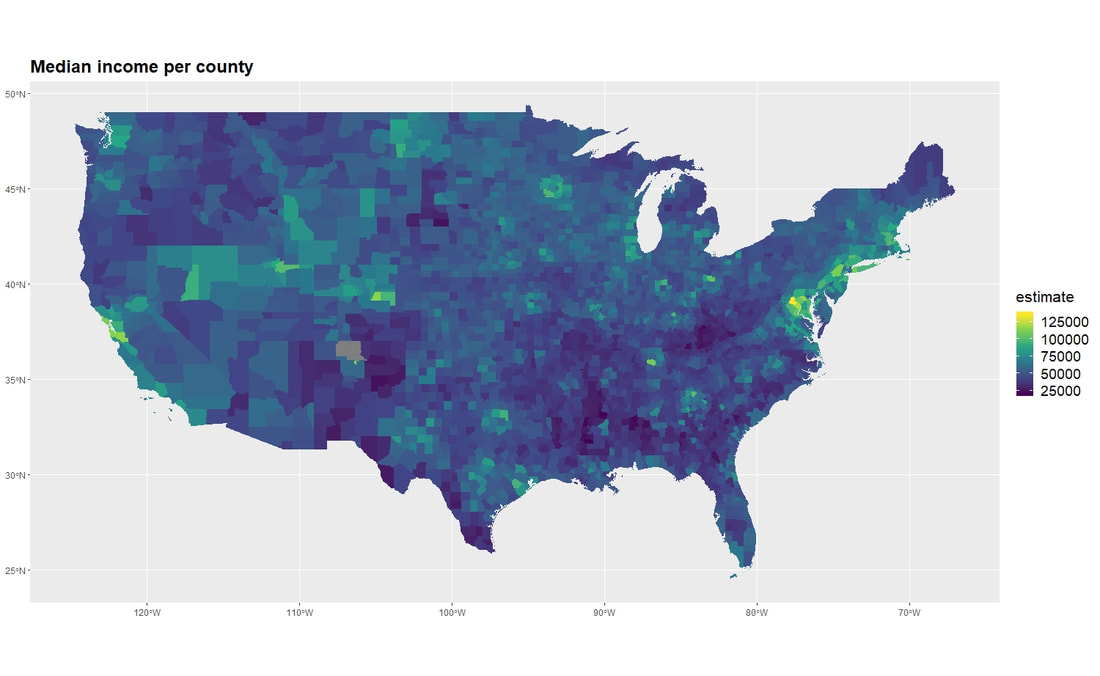
 RSS Feed
RSS Feed
